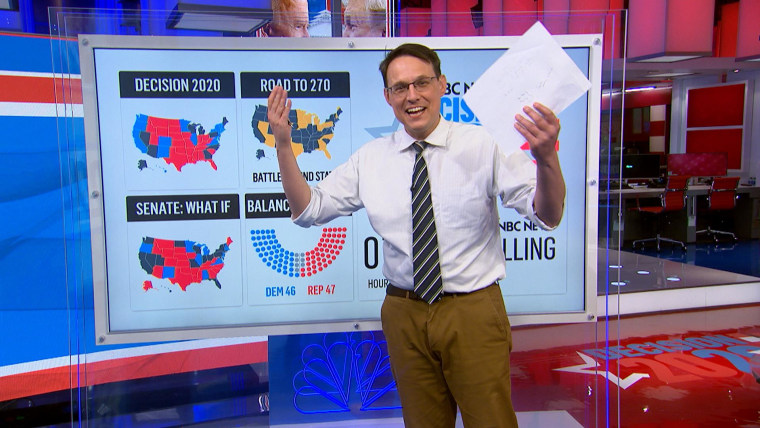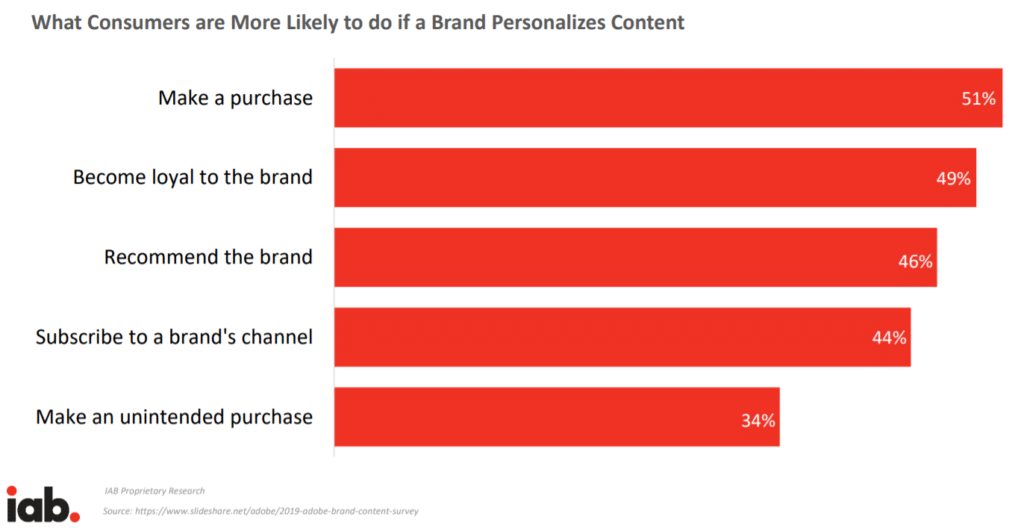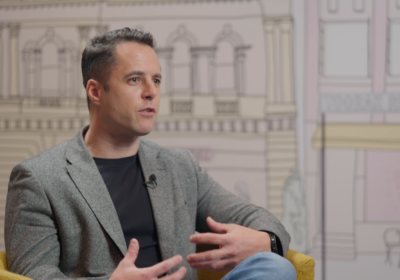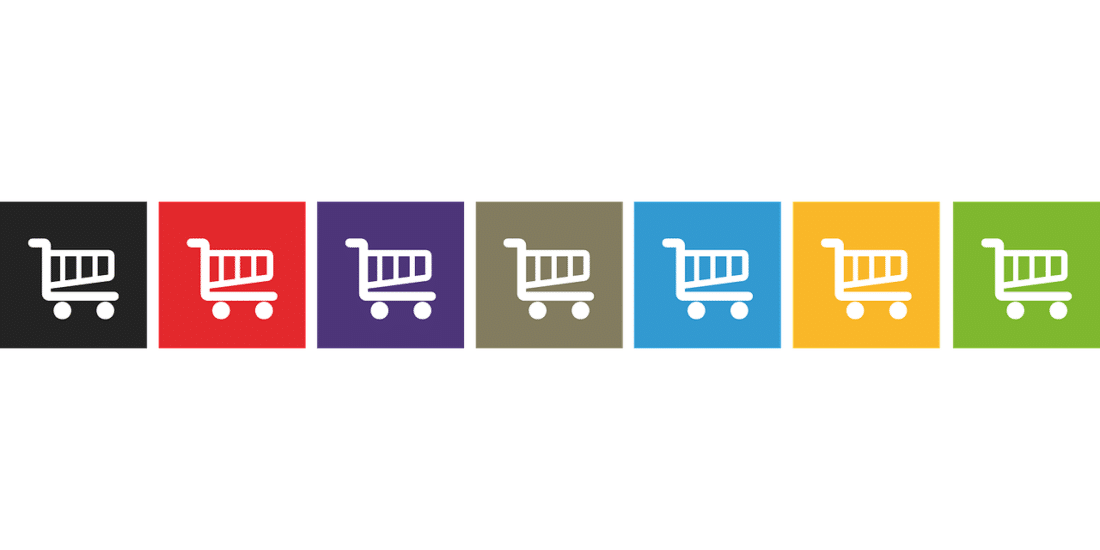The Future of Shopping is Live was updated in May 2022.
Covid-19 massively accelerated the direct brand economy. There is no turning back, says the IAB.
CBS This Morning Anchor Gayle King gave a shout-out during the 2020 presidential election to Steve Kornacki, the MSNBC journalist known as the “map guy” for his Electoral College updates. As part of a round-up of positive stories, King talked about his pants.
Kornacki had worn Gap khakis, a tie and shirt with the sleeves rolled up every day for five days as he reported the election results on air.
Men who watched voted a second time, with their wallets. According to a spokesperson from the Gap, online sales of the Modern Khakis with GapFlex in “palomino brown” increased 90%. They retail for $59.95.
The pants-palooza is just the latest example of the e-commerce boom happening across the country.

Shop digital
The Covid-19 pandemic has shrunk the timetable for widespread ecommerce adoption, according to the Interactive Advertising Bureau. What experts expected to see over the course of five years has actually occurred in five months.
“The transition of physical shopping to digital shopping is five times faster in 2020, so far, than in any previous year,” IAB Executive Chairman Randall Rothenberg told a virtual group of Brand Disruption Summit attendees last week. “We call this new retail paradigm ‘storelessness.’”
The three-day summit provided exclusive access to some of the best minds in advertising, media and entertainment. Paris Hilton was interviewed by her romantic partner, venture capitalist Carter Reum, on how she built her multibillion dollar, direct-to-consumer business empire.
Anne G. Donohoe, managing director of KCSA Strategic Communications, interviewed actor Jim Belushi on his latest venture, Belushi’s Farm Cannibas. On the summit’s first day, Rothenberg presented the findings of the IAB’s 2021 Brand Disruption Report.
In 25 minutes, Rothenberg took his audience on a consumer behavior odyssey filled with stats, history lessons and observations. His presentation detailed the 1852 opening of Le Bon Marché in Paris, the world’s first department store now owned by LVMH.
Buy digital

For 170 years, physical stores have dictated how people discover and buy things, Rothenberg said. But digital technology is disrupting that power structure. Influence is coming full circle because the internet—propelled by the pandemic—is giving newer, nimbler and digital-only businesses an edge over legacy brands.
“The more that consumers conduct their lives in digital environments, the more conditions favor direct brand disruptors over indirect brand incumbents,” Rothenberg said.
Take, for example, the massive amount of dollars pouring into digital shopping carts. In the first six months of 2020, consumers spent $347 billion online.
Last year, there were only two days, outside the holiday season, when people spent more than $2 billion online, he said, citing Adobe Analytics data. By the end of August 2020, there had already been 130 $2-billion e-tail days. “Every day from May to the end of June was a $2 billion e-tail day,” Rothenberg said.
A major theme in the report is the strengthening of the “direct brand” economy, as brands follow the model of digital eyeglass retailer Warby Parker, which launched in 2010.

As part of this trend, digital-only brands are taking over legacy brick-and-mortar companies. These companies have been hit especially hard by the pandemic and subsequent lockdowns. Store closures are likely to top 25,000 this year, with more than half of them taking place in shopping malls, according to the IAB report. Companies including Brooks Brothers, Century 21, Neiman Marcus and JCPenney have filed for bankruptcy; for its part, Gap has closed 350 stores.
Disruption is everywhere, all the time
Digitally savvy companies are capturing their own first-party data on consumers as government regulations place restrictions on third-party cookie data collection. Today, successful companies are data companies that make things.
While total pet food sales grew 7% in 2019, sales at digital-only company Chewy grew 40%, with 2019 gross revenues now totaling $4.85 billion. In the home furnishings industry, 2019 spend was up an average 3%. But Wayfair’s total net revenue increased 35% to $9 billion—six times that of Crate & Barrel, said Rothenberg, citing multiple sources.
In August, Nike announced its Consumer Direct Acceleration strategy, which calls for the closure of nine wholesale accounts. The footwear company expects digital sales to account for 30% of all sales in fiscal 2021—two years ahead of schedule. “Nike’s move reflects its recognition that first-party data, harvested from its own digital and physical stores, lies at the heart of its business…from inventory management to consumer experience,” Rothenberg said.
As digital as life has become, the IAB’s report takes into account a universal truth: the people filling up digital shopping carts might be lonely there, on the couch. What, then, can brands do about it?
Group shopping therapy

“The desire for shared experiences is innate to us as humans,” said Chris Bruderle, IAB’s senior director, research and analytics. “How do you reconcile storeless shopping with shared experiences? One way we might do this is livestreaming.”
Retail therapy is now going to be livestreamed on devices. The livestream shopping industry, forecast to reach $25 billion in U.S. revenues by 2023, explains why Walmart and Oracle bought TikTok, Rothenberg said, noting the social platform’s deal with ecommerce company Teespring, which allows creators to sell merchandise to fans directly.
“The medium is the store. Livestreams, AR [augmented reality], showrooming, and social selling experiences are proving more effective than physical stores, becoming brands’ new competitive arena,” Rothenberg said. “The screen is the ad, the content and the store. One medium can take consumers from the top to the bottom of the purchase funnel. This points to directly shoppable media and advertising.”
Enter Jeff Lotman, CEO of licensing company Global Icons and men’s and women’s apparel company Fred Segal. In the middle of a global expansion, the Los Angeles based retailer has had some pretty famous customers over the years. Gen X and Baby Boomer marketers might recall a poster of Farrah Fawcett riding a skateboard. The Jeans? Fred Segal.

“China has been streaming [shopping experiences] for years,” said Lotman in his IAB presentation. “Taobao [the Alibaba Group-owned ecommerce site] lets consumers shop while listening to influencers’ comments and reviews.”
Talk shop
Following suit, Fred Segal is launching a series of livestreamed shopping episodes in partnership with digital shopping platform Talk Shop Live and Mastercard. The partnership builds on shopping events the company has hosted from its Sunset Boulevard flagship location via Zoom on Facebook.
Premiering on Nov. 23, the shows will livestream weekly on Mondays beginning at 4 p.m. PT. Each show will feature guest hosts and a variety of products from Black-, women- and minority-owned businesses, while offering exclusive promotions and one-click payments with Click to Pay.
“You’ve got to find the right host for the product,” Lotman told the IAB attendees as part of a series of tips for successful ventures. “I made the mistake of having someone with a huge influencer following but it didn’t make people buy the product. With live shopping, you have to connect. It’s really important if you want to sell.”
Planning to Host Livestream Shopping Events?
Advice for Brands per Jeff Lotman, CEO of Fred Segal and Brand Icons
- Use professional lighting and three cameras: one that is fixed on a wide shot, one for close-ups and one for the presenter
- Don’t use Zoom, which will limit purchasing because people will have to leave the platform to buy the product
- Make sure everyone has a microphone, including the model
- Provide Q cards or a teleprompter for the presenter
- Ensure a wide array of product to sell
IAB summit attendee Toi Sweeney, who spent 16 years at shopping channel QVC, most recently as a senior style director, said digital live shopping builds on the TV model.
When someone is watching QVC on TV, she or he needs to make a call to buy something. With digital live shopping, however, the content, shopping cart, and final purchase take place on the same device. As with TV, using personality and storytelling to build relationships is fundamental, she said.
“The major difference I’ve seen in this trend is that the consumer has direct access to the talent, or the host or person that is running the selling live,” said Sweeney, owner of The Well Dressed Brand consultancy.
“When you are a television host at QVC, you have a producer in your ear…when you’re live selling [on digital platforms], I would imagine the things that are happening around you are not as busy as at a multibillion dollar TV studio.”
Going live
Indeed, celebrities from Garth Brooks to Alicia Keys are using Talk Shop Live to sell their wares and connect with fans in an extremely casual way.
During a live shopping event to sell her memoir, Keys acknowledged she was sitting in an uncomfortable chair, not sure if she was looking in the right direction, and waiting for other people to get online before getting started. Then she launched into a soulful presentation on leading an authentic life.
“This is the first time we’re going to build on it, person to person, just us,” she said. Nine months later, the presentation, which has had 21,9000 views, is still live. So are the shopping cart and the original comments from her fans.
“It’s the power of live, the power of building community, the power of building relationships. You can interact with the customer, which is amazing,” Sweeney said, noting that the customer also wins. “Wouldn’t we all want direct access to a celebrity or influencer that we love?”
Sweeney also offered advice for marketers exploring the viability of livestream (and live) shopping.
“Let your freak flag show. That’s what it’s about,” she said. “When you look at Paris Hilton or the Kardashians [who had a QVC channel in 2010], people are tuned in. Good, bad or indifferent, they are being themselves.”
Image by Gleen Ferdinand from Pixabay





Join the conversation